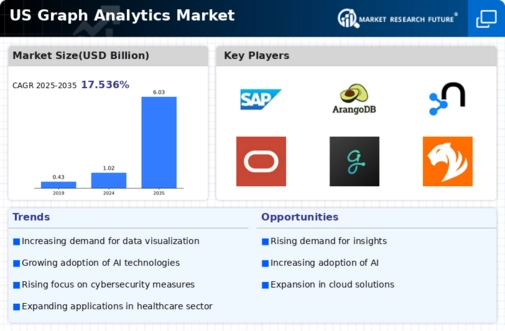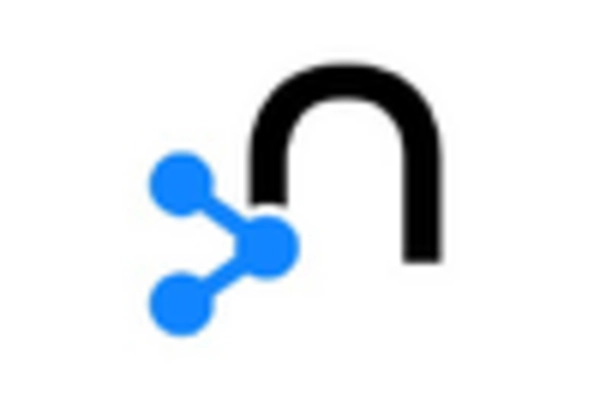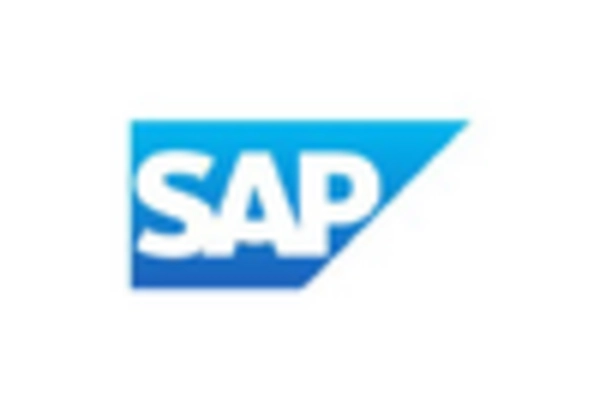Rising Demand for Real-Time Data Processing
The graph analytics market is experiencing a notable surge in demand for real-time data processing capabilities. Organizations are increasingly recognizing the value of timely insights derived from complex data relationships. This trend is particularly evident in sectors such as finance and telecommunications, where the ability to analyze data in real-time can lead to improved decision-making and operational efficiency. According to recent estimates, the market for real-time analytics is projected to grow at a CAGR of approximately 30% over the next five years. This growth is likely to drive investments in graph analytics solutions, as businesses seek to leverage advanced algorithms to process and visualize data streams instantaneously. Consequently, the graph analytics market is positioned to benefit significantly from this rising demand, as companies prioritize tools that facilitate immediate insights and enhance competitive advantage.
Enhanced Customer Experience through Personalization
The drive for enhanced customer experience through personalization is significantly influencing the graph analytics market. Businesses are increasingly utilizing graph analytics to understand customer behavior and preferences, enabling them to tailor their offerings accordingly. By analyzing customer interactions and relationships, companies can create personalized marketing strategies that resonate with their target audience. The graph analytics market is anticipated to reach $2 billion by 2025, underscoring the importance of personalized experiences in driving customer loyalty. As organizations strive to improve customer satisfaction and retention, the demand for graph analytics solutions is likely to grow. This trend suggests that the graph analytics market will continue to evolve, as businesses seek innovative ways to leverage data for personalized customer engagement.
Advancements in Cloud Computing and Storage Solutions
Advancements in cloud computing and storage solutions are playing a crucial role in shaping the graph analytics market. The shift towards cloud-based platforms allows organizations to store and process large volumes of data more efficiently, facilitating the deployment of graph analytics tools. This transition is particularly beneficial for small and medium-sized enterprises that may lack the resources for on-premises infrastructure. The cloud analytics market is projected to grow at a CAGR of 23% from 2021 to 2026, indicating a strong trend towards cloud adoption. As businesses increasingly migrate to the cloud, the graph analytics market is likely to benefit from the enhanced accessibility and scalability that cloud solutions provide. This evolution suggests a promising future for graph analytics, as organizations seek to harness the power of cloud technology to drive their analytical capabilities.
Growing Importance of Fraud Detection and Risk Management
Fraud detection and risk management are becoming increasingly vital in the graph analytics market. Organizations across various sectors, particularly finance and insurance, are leveraging graph analytics to identify fraudulent activities and assess risks more effectively. By analyzing relationships and patterns within data, businesses can detect anomalies that may indicate fraudulent behavior. The graph analytics market is projected to reach $63 billion by 2024, highlighting the increasing reliance on advanced analytics for risk mitigation. This trend is likely to propel the adoption of graph analytics solutions, as companies seek to enhance their capabilities in fraud detection and risk assessment. As a result, the graph analytics market is expected to expand, driven by the growing need for sophisticated tools that can provide actionable insights into potential risks.
Integration of Graph Analytics with Big Data Technologies
The integration of graph analytics with big data technologies is emerging as a pivotal driver for the graph analytics market. As organizations accumulate vast amounts of data, the need for sophisticated analytical tools that can manage and interpret this data becomes increasingly critical. Graph analytics provides a unique approach to understanding complex relationships within large datasets, enabling businesses to uncover hidden patterns and insights. The market for big data analytics is expected to reach $274 billion by 2022, indicating a robust growth trajectory. This integration allows for enhanced data visualization and improved analytical capabilities, which are essential for sectors such as healthcare and retail. As companies continue to adopt big data solutions, the graph analytics market is likely to see substantial growth, driven by the demand for tools that can effectively analyze interconnected data.
















